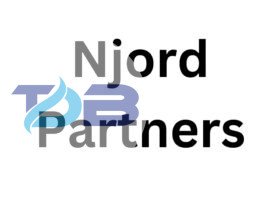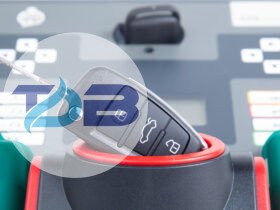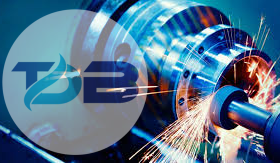A Guide to EICR Testing
An Electrical Installation Condition Report (EICR) is a formal document that assesses the safety, condition, and functionality of electrical installations within a property. It ensures compliance with UK electrical safety standards and regulations.
What is EICR Testing?
EICR testing involves an inspection and testing of electrical installations to ensure they are safe for use and compliant with regulations.
The purpose is to:
- Identify potential electrical hazards.
- Ensure the installation is not overloaded.
- Detect defective electrical work.
- Check for wear and tear or damage to electrical systems.
- Assess if the earthing and bonding are adequate.
Who Needs an EICR?
Landlords: As per the Electrical Safety Standards in the Private Rented Sector (England) Regulations 2020, landlords in England are required to carry out EICR tests every 5 years or at the beginning of a new tenancy.
Similar laws apply in Scotland, Wales, and Northern Ireland.
Homeowners: Recommended for older homes or after major renovations. Often required when selling a property or obtaining home insurance.
Businesses: Ensures compliance with the Electricity at Work Regulations 1989, requiring employers to maintain electrical systems in a safe condition.
Public Buildings: Schools, hospitals, and other public institutions need EICRs to meet safety standards.
How Often Should an EICR Be Done?
The frequency depends on the type of property:
Domestic properties: Every 10 years (or 5 years for rented properties).
Commercial properties: Every 5 years.
Industrial properties: Every 3 years.
Public buildings: Every 5 years or more frequently depending on risk assessments.
Swimming pools: Every year.
What Does the EICR Involve?
The EICR process typically includes:
Visual Inspection: Check for visible signs of damage, wear, or poor installation.
Testing: Live and dead testing of circuits.
Checking circuit breakers, residual current devices (RCDs), and protective conductors.
Report and Results: The report classifies issues using the following codes:
- C1: Danger present, requiring immediate action.
- C2: Potentially dangerous, needing urgent attention.
- C3: Improvement recommended (not mandatory).
- FI: Further investigation required.
What Happens if an Installation Fails?
If the EICR identifies issues (C1, C2, or FI), remedial action is required.
The property owner/landlord must:
- Carry out repairs by a qualified electrician.
- Obtain a new report or certificate confirming the issues have been resolved.
Cost of an EICR
The cost varies based on:
- Property size.
- Number of circuits.
- Location.
Why is EICR Testing Important?
Safety: Prevents fires, electrocutions, and other hazards.
Compliance: Ensures adherence to legal and regulatory requirements.
Insurance: Provides evidence of maintained safety, aiding insurance claims.
Asset Protection: Identifies issues early, reducing repair costs.
How to Prepare for an EICR?
Clear access to all sockets, switches, and the consumer unit. Inform occupants of potential power interruptions during testing.
How Can Facilities Management Help?
Coordinating EICR Testing
Facilities managers ensure EICR testing is scheduled and conducted efficiently by:
- Hiring Qualified Electricians: Vetting and engaging certified professionals (e.g., NICEIC or NAPIT registered electricians
- Scheduling Inspections: Organizing inspections at convenient times to minimize disruption, especially in commercial or multi-use spaces.
- Budgeting: Allocating resources to cover testing costs and any subsequent remedial work.
Ensuring Compliance
FMs ensure the property adheres to all legal requirements, including:
- Monitoring the frequency of EICR inspections.
- Keeping up-to-date with evolving regulations, such as changes in BS 7671 Wiring Regulations.
- Providing landlords or property owners with reports for record-keeping and submission to tenants or authorities.
Maintenance and Remedial Work
Facilities management oversees:
Pre-Inspection Maintenance: Addressing obvious electrical issues before EICR testing (e.g., damaged sockets or loose wiring).
Post-Inspection Repairs: Coordinating remedial actions if C1, C2, or FI issues are identified in the report.
This may include:
- Engaging electricians for urgent repairs.
- Implementing recommended upgrades (C3 codes).
- Documenting completed work with updated certificates.
Documentation and Record-Keeping
Facilities managers maintain comprehensive records, such as:
- Copies of EICR reports for all properties under their management.
- Documentation of repairs and follow-up actions.
- Proof of compliance for inspections or insurance claims
Risk Mitigation and Safety Assurance
Facilities managers proactively ensure safety through:
Routine Inspections: Conducting visual checks between EICR cycles to identify emerging issues early.
Regular Maintenance: Maintaining electrical equipment and installations, ensuring systems are always in good condition.
Emergency Preparedness: Establishing protocols for dealing with dangerous findings (e.g., immediate isolation of circuits with C1 codes).
Conclusion
In summary, facilities management simplifies and optimizes the EICR process, ensuring safety, compliance, and efficiency while reducing the burden on property owners and landlords.







































Leave a Reply